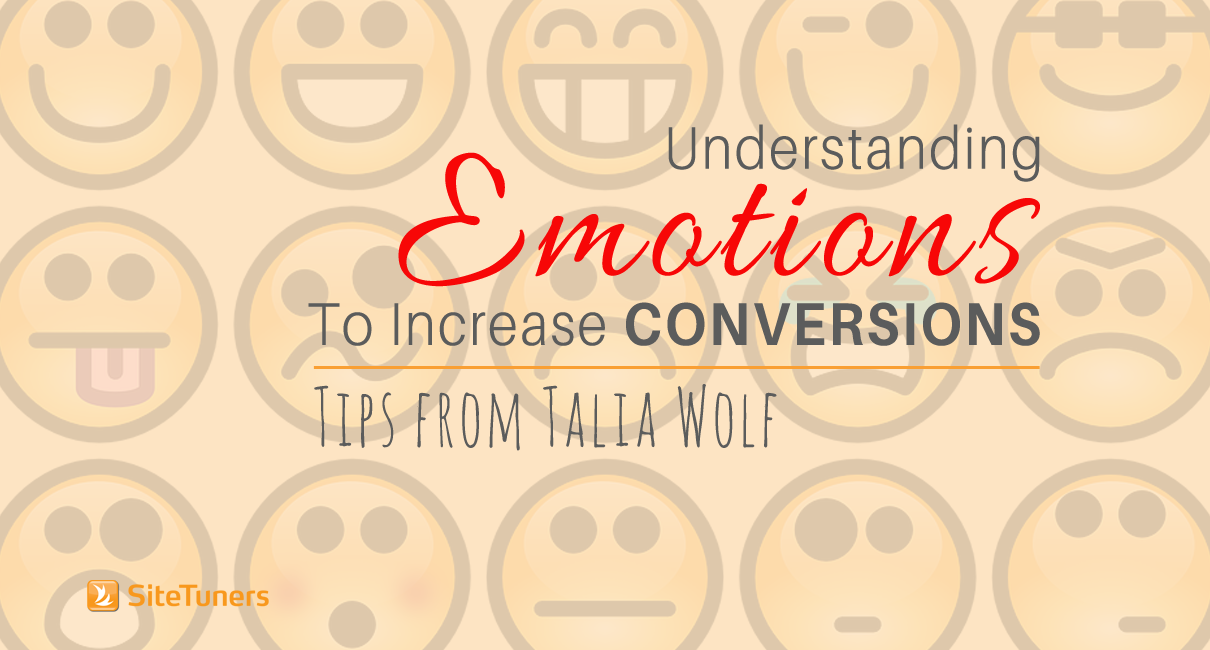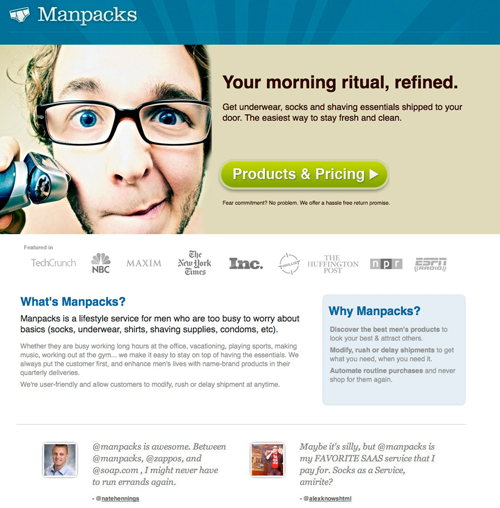 We love web analytics. It tells us what‘s working and what isn’t.
We love web analytics. It tells us what‘s working and what isn’t.
That said, Talia Wolf, Founder and CEO of Conversioner, notes that marketers have become too focused on tracking. Tracking where people are coming from, what they’re doing on the site, and where they’re going.
Marketers are too caught up in tracking that we forget about the psychological needs of the users – why people make a purchase.
In an episode of Landing Page Optimization, Talia and SiteTuners CEO Tim Ash discuss why it pays to be in-tune with your customers’ emotional goals.
Leverage universal human motivations
According to Phil Barden, author of Decoded, the primary motivations for people are the same:
- Security
- Autonomy
- Excitement
Talia explains that though this has several levels, at the core, people have the same emotional needs. And if you can identify the emotional triggers behind making a purchase, you can convey that in your marketing and, in effect, increase conversions.
Emotional conversion optimization differs from behavioral targeting where you show different landing pages to users depending on, for instance, the country they’re from.
With emotional conversion optimization, there’s less focus on the behavior. A visitor from China is served the same landing page as a visitor from the U.K. because they have the same emotional build.
There’s also less focus on the features or the price, but more on the emotional benefit the customer gets from buying the product or service.
The Michelin tire company is famous for running the same kind of commercials for many years which takes the positioning of security – a baby sitting inside one of their tires. They don’t explicitly talk about the high-performance of their products or the excitement of driving. But they convey that with their tires, you’re keeping your family safe, and that’s a fundamental human need.
Have an overarching principle behind each test
Finding out what your audience’s emotional motivations are has two parts:
- Analytical research includes studying user behavior, finding the leaks, and collecting the low-hanging fruit.
- Emotional research is about digging deep to know the emotional structure of the customers and learning who the company and the competitors really are.
Then, out of the research, you …
- Come up with hypotheses. Identify different emotional triggers that will potentially nudge customers to make a purchase.
- Create the design or landing page.
- AB test to see what works.
Talia stresses that AB testing is not merely duplicating a landing page and changing a small element on the page. If you change the call-to-action (CTA) button to red, for example, and that version wins, you don’t learn much from the test.
Testing emotional triggers means that each version of the landing page or design has its own strategy. This way, whatever version wins, you get a perspective into the type of clients you have and the messaging they respond to best.
Tim adds that tests have to based on critical insights you glean from voice of customer research. You can …
- Survey existing customers. The fact that they’re your customers implies that your emotional positioning appeals to them. By having open-ended conversations with existing clients, you can learn what they have in common.
- Do user testing. Shadow someone as they’re buying your product and talking aloud about their experience. You can also have them do this for your competitor’s products.
Try different ways of conveying an idea
A representation of an idea is not going to work every time. It will not always map to your audience’s mental concept of a motivation that you’re trying to convey.
So, you might need to try slightly different images or a slightly different headline that still communicate the idea. For instance, if you tested ‘safety,’ and it didn’t work, it could be because you used stock photos.
It’s not about a single element on the page, though.
You have to be deliberate about how you make all the elements play together, so the emotional theme is carried through properly on the page – from what the images look like to the appearance of the CTA.
With conveying ‘safety’ for instance, it’s not as simple as putting trust logos or media mentions on your page. It’s taking the whole idea of ‘safety’ and making it into a strategy.
Manpacks sells men essentials, but they don’t talk about the quality of the products on their landing pages. They instead put emphasis on the benefit the customer gets from using their service – a refined morning ritual that ultimately leads to a changed life. This messaging is conveyed in the images, and even the colors, they use on their pages.
Whatever your messaging is, that has to be communicated in all your marketing essentials.
A pre-requisite to crafting your messaging is a solid understanding of what your brand stands for. Once you have that down, you need to stay on-message and make sure it resonates with your audience.
Talia points out that you compete with a lot of companies who sell the same stuff that you do. And people often don’t remember where they bought a product or how much it cost.
It’s the experience customers go through that makes an impression. Conveying a great experience and making people feel different and valuable make the sale; not the slash in prices.
Put customers first, ALWAYS
It’s not about you; it’s about them. Being top-of-mind for your customers starts with you really understanding them.
Talia says that you shouldn’t be thinking about what you want or what you think will sell. Look at things from your customers’ point of view and consider …
- Why would they buy the product?
- How do people feel when they buy your product or service?
Once you figure out what emotional needs your audience is trying to satisfy, it’s easier to design and craft your messaging.





